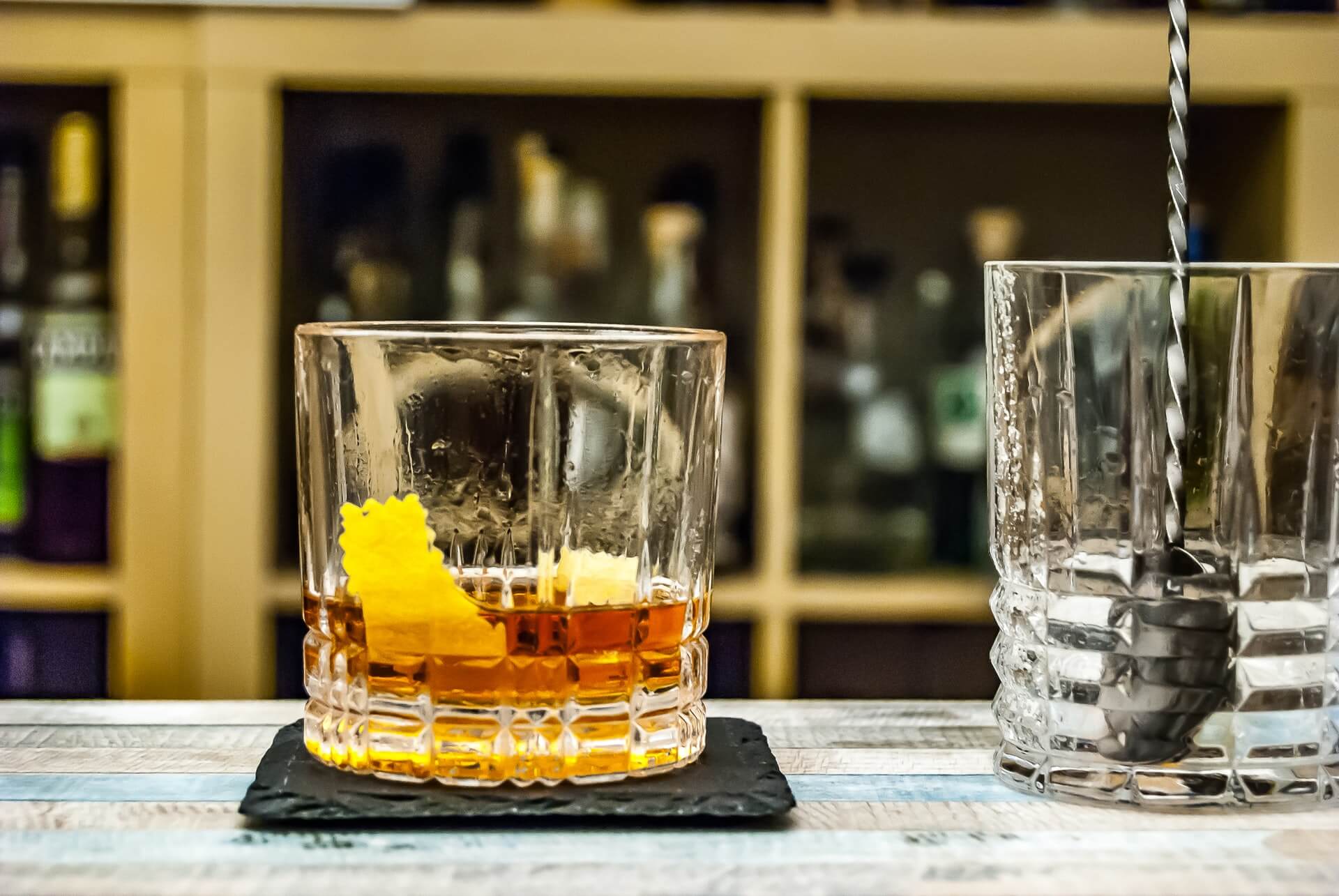National Cocktails: Canada & America
by David Klemt

We’re taking a look at two cocktails that can trace their roots to America and Canada for this year’s National Cocktail Day.
Further, KRG Hospitality has a headquarters in each country. So, we’ll be focusing on the cocktails for which Canada and America are known.
Celebrate National Cocktail Day, March 24, with the recipes below. Cheers!
Canada’s Official Cocktail
Let’s kick things off with Canada. There’s no cocktail with as close an association to the Great White North as the Caesar.
In fact, it’s Canada’s national cocktail. So ubiquitous, it’s woven into the fabric of Canadian pop culture.
Consider this Letterkenny exchange as exhibit A:
Darryl: “I’d have a Bloody Caesar.”
Wayne: “Do you wanna know what? I’d have a Caesar, too.”
Squirrely Dan: “I could have a Caesar if you guys are havin’ Caesars.”
Darryl: “Hard to see a Caesar and not want a Caesar.”
Wayne: “That’s actually how they market Caesars.”
According to cocktail lore, the city of Calgary and province of Alberta get to call themselves the home of the Caesar.
Disputed Origins
As the story goes, Walter Chell invented the cocktail in 1969. Chell was a restaurant manager at the Calgary Inn, now a Westin property.
Oh, wait. There’s also Walter Winchell and the Smirnoff Smiler cocktail. Tracing mentions back to 1953, this drink is made with vodka, tomato juice, clam juice, and Worcestershire sauce.
Hang on… In 1959, Charles Addams—y’know, the creator of the Addams Family—said he created the Gravel Gertie in Manhattan, New York. This cocktail calls for vodka to be mixed with tomato juice, clam juice, and Tabasco sauce.
Well, Chell was onto something when he combined every ingredient in the Smiler and Gertie. To me, this an original that stands far above any perceived predecessors.
Chell also crafted the recipe using a “rule of four”:
- one shot of vodka;
- two dashes of hot sauce;
- three dashes of salt and pepper; and
- four dashes of Worcestershire sauce
Prepare a glass with a celery salt or salt and pepper rim. Add ice, then add the above ingredients. Top with Caesar mix (Clamato juice, these days), and garnish with a celery stock and lime.
America’s Unofficial Cocktail
Now, onward to America. So, we don’t have an official national cocktail here. Clearly, our neighbors to the north know how to have more fun.
We have a native spirit—bourbon—but that’s where it ends.
However, we do have New Orleans. And in New Orleans we have the birthplace of American hospitality.
We have something else in New Orleans. In 2008, the Louisiana state senate passed a bill that named an official cocktail for the city.
That cocktail? The Sazerac.
Two Bases, One Drink
Cocktail historians will tell you that there are essentially two recipes for the Sazerac. They’ll also tell you that the origins of this cocktail are under dispute.
Are you beginning to see a pattern with cocktail history? It’s never clear, is it?
First, let’s address the original, assuming it’s America’s first (or at least oldest known) cocktail. From the 1850s to 1870s, it was made with Cognac. And not just any Cognac, Sazerac de Forge et Fils.
Depending on who you ask, either bar owner Aaron Bird or Antoine Amedie Peychaud invented the Sazerac. The cocktail recipe includes two dashes of Peychaud’s Bitters, so it’s easy to understand why some credit Peychaud with creating this drink.
Then, there’s the version that took off in the 1870s. Again, depending on the source, either American tastes changed or a phylloxera outbreak affected Cognac production. Perhaps both are true, converging to alter the Sazerac recipe.
Either way, rye whiskey replaced absinthe, and Herbsaint replaced the absinthe. Some bartenders also substitute bourbon for the rye.
The Recipe
It’s not difficult to make a Sazerac, just like it isn’t difficult to find one in New Orleans.
You’ll need two Old Fashioned (aka rocks) glasses, or one Old Fashioned and a mixing glass.
Rinse a chilled glass with absinthe or Herbsaint, and add ice. In the mixing glass or second glass, add ice, two ounces of Cognac, rye whiskey or bourbon, a half-ounce of simply syrup, and three dashes of Peychaud’s Bitters. Stir until well chilled.
Before straining, discard the ice and any excess absinthe or Hersaint from the prepared glass. Now, strain into prepared glass, express a lemon peel, and use that peel as garnish.
Alternatively, you can split the base and do Cognac and rye or bourbon, paying homage to each version of the Sazerac.
Image: Johann Trasch on Unsplash

